The 4th Earl’s predecessor, William Sydney Clements, the 3rd Earl of Leitrim, was a hated landlord in the 19th century. He owned land in four Irish counties and lived on his estate in Manorhamilton in County Leitrim. He also possessed an estate in Rawros, County Donegal on the outskirts of Carrigart. Leitrim’s lands in Donegal were located on Mulroy Bay and included a great portion of the Fanad Peninsula. He was famous for evicting tenants for the slightest offense. For this he was murdered in Donegal on the road between Carrigart and Milford in 1878. More can be found about the murder in http://tomgallen.com/2013/09/the-killing-of-lord-leitrim/ .
The 3rd Earl was succeeded by his nephew Robert Clements, the 4th Earl of Leitrim. The 4th Earl reinstated some of the tenants that the 3rd Earl had evicted. He was popular and did much to improve the county and make it prosperous. The 4th Earl decided to live permanently at Manorvaughan, his estate in Rawros in County Donegal.
The 4th Earl of Leitrim wanted more privacy on his estate and didn‘t care to view the cabins of his tenants. He proposed to forest his land between the Carrigart Road and Mulroy Bay. Most of the cabins were in Carrick Townland. From the 1857 Griffith Valuation, these are the names of the families who lived in Lower Carrick in the area where he proposed his forest.
1. John Duffy, 2. Daniel Connor, 3. Daniel McMenamin, 4. Margery and Andrew Boyce, 5. Neal Connor, Patrick Woolhare, Daniel McGinley, 6. Edward McFadden, 7. Gerald Graham, 8. Patrick McMonigle, Denis Coll, Patrick Boyce, 9. Michael Duffy, Daniel Duffy, John Gallagher, 10. Charles McGinley, 11. James Coyle, 12. Patrick McBride, 13. Charles McBride, 14. Neal Dougherty, 15. James Connor Sr & Jr, 16. Michael and John Coll, 19. Fergal Coll, 20. Denis Duffy, 21. John Boyce and Anne McGinley, 22. Daniel McBride, 23. Bryan McBride and Hugh Boyce, 24. George Coyle.
The numbers refer to the lots shown in the map below from the Griffith Valuation.
In April 1881, instead of just evicting his tenants to plant his forest as his uncle would have done, he offered to move ten tenants from Lower Carrick to a hill in Upper Carrick. He built each family a house on their lot. The houses were built with a slate roof and were the first houses in the area with roofs of this kind. The other homes in the region used straw thatch for their roofs. The row of new houses became known as Slate Row.
In the Earl’s own words, “I wanted to shift some tenants off land in the sight of my house. And I happened to have 200 odd acres of land reclaimed. I thought that I would shift ten tenants up there and so clear the land in the sight of my house, and I did it at great sacrifice to myself in an actual and pecuniary point of view, but great advantage to myself in an artistic point of view, and great advantage to them, as they got their farms, not only cheap, but I am building them slated houses and offices at a cost of a couple of thousand pounds, and they don’t really pay as rent the money laid out on their buildings. I told them ‘you will have these lands at the original rent of your own farms, and at the end of five years you will have them at such and such a rent, and that will continue for my life’ but I would expect my successor to raise them for the proper value. I shall put this in writing.”
In addition to providing lots for his tenants, the Earl provided them a large area of the townland for community grazing for their livestock. This area became known as the “Park.”
One of the tenants moved to Upper Carrick was Edward McFadden and his family. He had farmed a narrow 4 acre field that ran from Mulroy Bay, across the old road to Milford and up the hill. His field was next to the abandoned Straham National School. The Straham School was closed by the 3rd Earl in 1868 when he built the Manorvaughn School in Rawros. I know of Edward because he was my wife’s great-grandfather. Edward moved to Slate Row with nine other neighbors. I’m not sure which of the other tenants from Carrick moved with him, but his neighbors on each side of his home on Slate Row were Gallaghers and McGinleys.
Today, many of the original slate row homes have been beautifully redecorated and provided with modern facilities. The McFadden home (no longer owned by the McFaddens) is one of them. However, some of the homes are in their original condition (and some have been abandoned).
In his short lifetime, the 4th Earl did much to help the people of Carrigart and he was much appreciated for it. In 1889, he donated land for the Mulroy National School in Devlinreagh where the children from Slate Row and vicinity could attend. He also began work on building a hotel and golf course in nearby Rosapenna. In 1892, he went to Sweden to obtain wood and technicians for building his Rosapenna Hotel. On his return to London, he became ill and died. He was only 45 years of age. His body was returned to Mulroy aboard his ship, the Rossgull. More than four thousand people followed his remains to Carrigart, and crowds of mourners gathered along the road. In the Mevagh R.C. Church, Rev. Gallagher said “ I am sure you feel with me the deepest sorrow over the sad event that has deprived this locality of its greatest benefactor… I hope.. you will all come and pay the last tribute of respect to his memory by attending the funeral.”
He was buried in the Carrigart (Church of Ireland) churchyard instead of in the family vault at St. Michan’s in Dublin. In 1895, a memorial to Lord Leitrim was unveiled in Carrigart. It was a Celtic cross of white Sicilian marble.

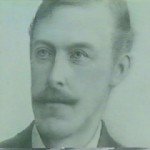
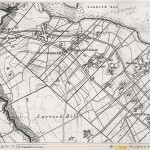
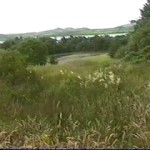

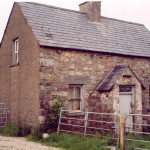
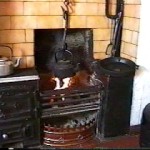


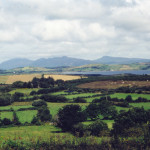
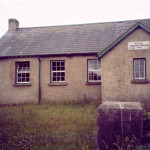
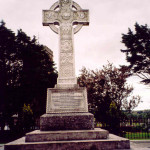
Thank you so much for your sharing your story with us!!